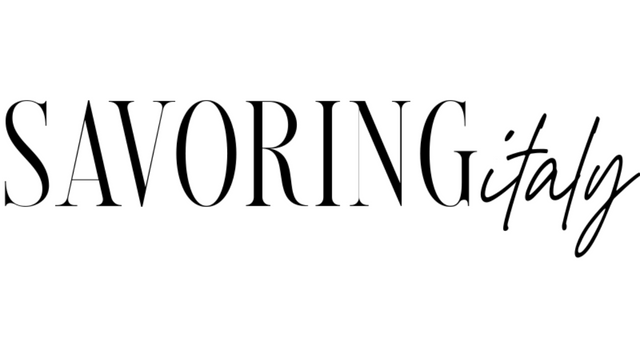Easter in Italy is an enormously significant celebration that totally extends beyond religious observances. This article explains an Italian tradition that blends faith, family, and cultural traditions, and will give you a comprehensive view of Italian life and its customs during every spring season.

This article contains affiliate links which supports us at no extra cost to you.
Jump To
Easter, or "Pasqua" in Italy, is extremely important. It's big. And, contrary to popular belief, it's not exclusively a religious thing; it's a full-on Italian culture showcase.
Everywhere in Italy, Easter's a happening in lots of different ways. You get solemn religious rituals like honoring Jesus Christ's resurrection served with a side of local fun.
Yes, it's about church ceremonies but it's also about happy get-togethers with friends and loved one. There are processions, masses, and elevated community vibes because of the "rebirth" symbolism. A fresh start and all that feel good spring stuff..
So, Easter in Italy is more than church. It's a blend of faith and family, showing Italy's culture and diversity. Easter here gives you a real look at Italian life and age-old traditions.

Overview of Italian Easter Week Events and Rituals:
Easter Week in Italy, here's a summation of how it all breakdowns:
Holy Thursday kicks it off. There's a mass for the Last Supper, then a penitence procession. Think barefoot folks and symbolic foods like bread.
Good Friday's solemn. Then you've got processions like the Via Crucis, reenacting Jesus' crucifixion journey. Expect statues and crucifixes.
Holy Saturday mixes it up. Florence's "Scoppio del Carro" sets off a fireworks-filled cart for luck and prosperity.
Easter Sunday's the big day. Starts with mass for Jesus' resurrection, then big family meals. Lamb and pastiera are typical, and kids get chocolate eggs.
Easter Monday, or Pasquetta, is chill. It's about outdoor stuff, picnics, beach trips. "Christmas with family, Easter with anyone."

Now, the processions and ceremonies:
Chieti's procession dates back to 842 A.D. It's got hooded figures and a moving Miserere hymn.
Sorrento's got two: White Procession on Thursday night and Black Procession Friday night. They're about Mary's sorrow and Christ's death.
Procida's Easter Mystery is intense and historic, starting in the 17th century.
Church's big in this. They handle the ceremonies, like Holy Thursday's foot washing and Good Friday's Via Crucis.
Easter's also about family meals and gifts (more on that below). Think Easter Dove Cake and chocolate eggs. It's a definitely a big communal thing.

Typical Easter Foods and Their Symbolic Meanings:
We begin with Agnello, or lamb. They serve it with potatoes or artichokes and bake it with rosemary.
Next are Easter eggs. They deal with a fresh start to life - think Resurrection. Some people go to church where the boiled eggs are blessed.
In Northern Italy, lasagna, ravioli, and tortellini are the delicacies of choice, like in Emilia Romagna.
In the center and to the south? Pasta with lamb and tomato. Not to be forgotten is Naples' Pastiera Napoletana. This cake is rich and sweet. Occasionally, with vanilla or orange flower.
Moreover, there is Colomba di Pasqua. One of the most common Italian Easter desserts. It's a dove-shaped cake. Made with almonds, candied orange, and buttery dough. This has to do with peace and harmony.
Lamb, as aforementioned, is also quite important. grilled or roasted, served with vegetables and potatoes. There are artichokes since, especially in Sicily, they're everywhere and pair really well with lamb.
And finally, the chocolate eggs are hollow and have surprises in them, just like some of the have in American. Kids love them…okay, adults too!

Sicilian Easter Traditions
In Piana degli Albanesi, Palermo, they've got Greek Orthodox vibes. Women parade in traditional dress, release white doves, and hand out red eggs.
Prizzi's Il ballo dei diavoli is a dance with devils and death figures, all about good versus evil.
San Fratello's I Giudei are basically men in loud (pseudo-military) costumes mess with processions, blasting trumpets.
At Trapani's I misteri, they parade wooden statues showing Christ's passion, with spears, crowns of thorns.
Enna's La Processione degli incappucciati has over 2500 hooded folks in a torchlight march, carrying statues.

Sicilian Easter food:
Lamb's everywhere, in sauces, potatoes, even stuffed scacciate. Then there's Falsomagro which is a beef stuffed with more beef (haha), mortadella, cheese, in tomato sauce. Of course, there's also pasta with artichokes stuffed with anchovies, and pecorino.
Taganu of Aragona and Pasta 'ncaciata are hearty pasta dishes with meat, cheese, breadcrumbs, baked.
Desserts? Think Sicilian Cassata, marzipan, candied fruits, marzipan lambs, pupu cu l’ova.
More events? Prizzi's Devils' dance, mixing folklore and religion. Modica's Madonna Vasa Vasa, where Mary and Christ statues "kiss." Scicli's U Gioia, a rebirth celebration with a silk banner.

Easter Monday in Italy, known as "La Pasquetta" (Little Easter)
Monday is about celebrating Christ meeting his disciples post-resurrection. It's also "Monday of the Angel," about Mary Magdalene meeting an angel at Jesus' empty tomb. And, secular-wise, it's also a civil holiday, started post-WWII. It extends the Easter break.
What do Italians do? They head outdoors. Picnics in the countryside, parks, seaside. It's about enjoying spring. Many visit parks and monuments, since shops and businesses close.
Towns have unique games and events. Panicale's got cheese rolling. Fontanelice? Fried bread and donkey races.
For food, think picnic. Hard-boiled eggs (again!), cured meats, cheeses, baked pasta, pizza piena. Often leftovers from Easter Sunday.
In Sardinia, it's a feast. Appetizers, grilled veggies, pasta, whole roasted pig or lamb (yes, more lamb too). It's a big, outdoor family and friends thing. Kind of like the 4th of July in the States, with bbq and Floridian shooting guns in the air.



Leave a Reply